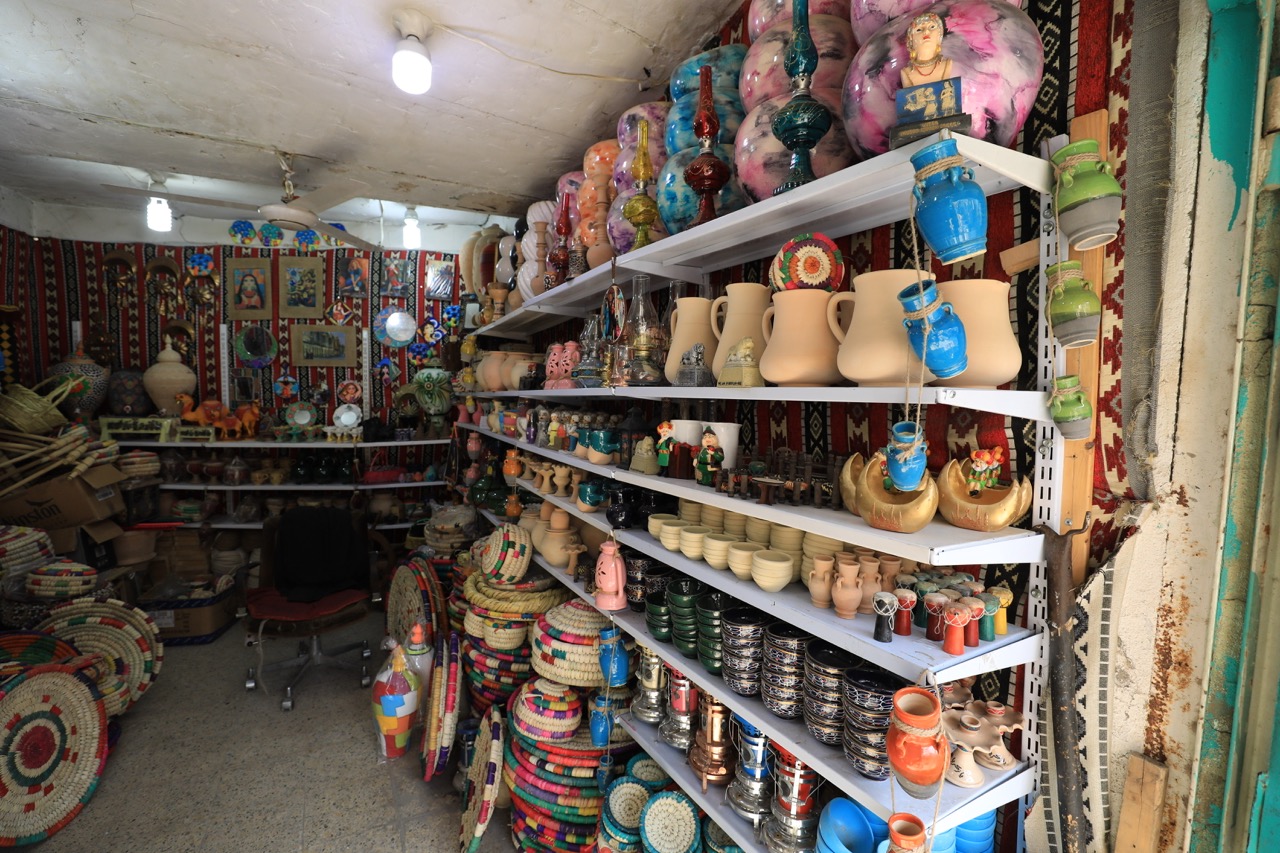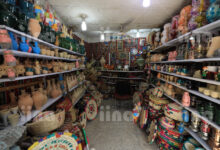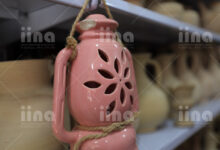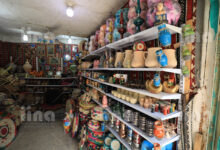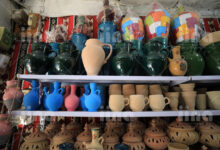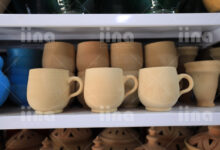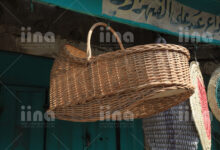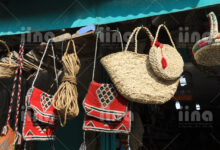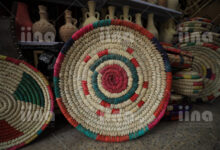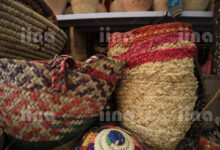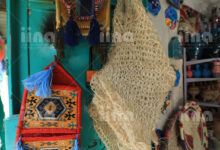For thousands of years, clay utensils for cooking and storing food have been an integral part of households in Sumer, the earliest known civilisation in what is now southern Iraq. Pottery holds a profound significance in Iraqi culture, where ancient civilisations relied on clay for constructing homes, crafting cooking tools, and even making ovens. The invention of cuneiform, one of the earliest writing systems by the Sumerians, further underscored the importance of clay, as it was inscribed onto clay tablets. However, with the influx of modern products in today’s market, the demand for clay handmade items has diminished.
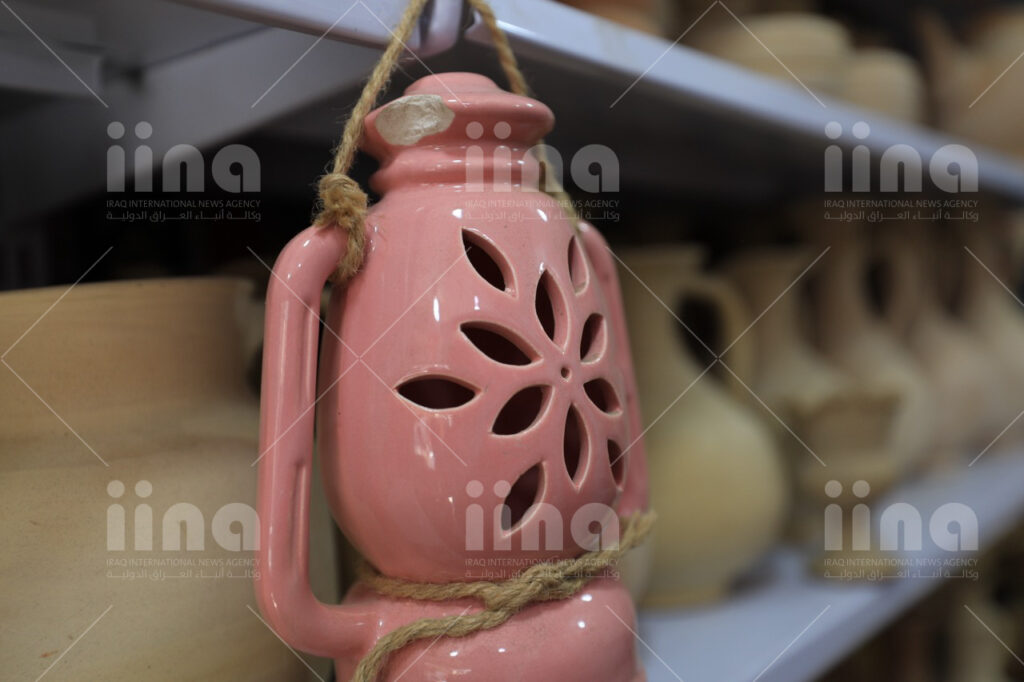
In the workshop, shelves hold a range of pottery, creating a captivating tableau. Some are plain, keeping their original rusty orange colour and others are painted in vibrant shades like deep blue or soft pink. A few tell their own story through the addition of unique patterns and intricate details. In this diverse collection, they come in various sizes and shapes, from large pots to small teacups. The play of light reveals a spectrum of finishes; some are shiny and glossy, while others have an earthy matte finish.
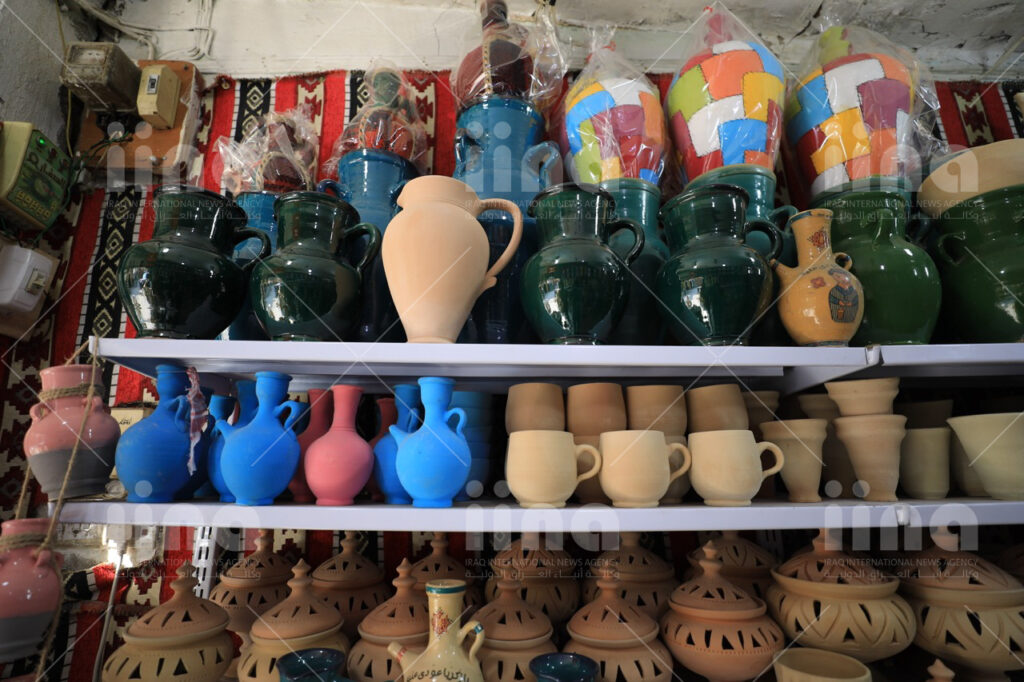
Alongside them are reed crafts such as baskets, bags and mats which were once everyday items in Iraqi homes, and are now treasured or replicated for their cultural significance. Similar to the pottery, some maintain their natural sandy tones, while others are interlaced with bright colours, enriching their decorative appeal. It is likely that some of these crafts are still used in Iraqi day-to-day life.
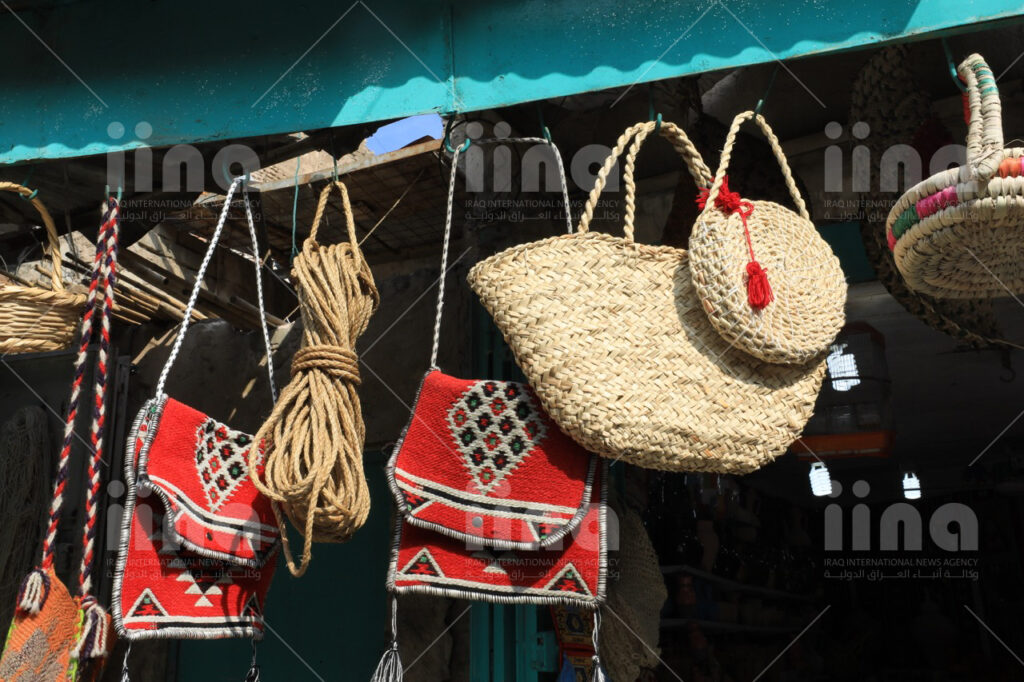
Despite economic and other difficulties, Iraqi artisans persevere, passing down their skills from generation to generation. Their dedication ensures that these traditions remain vibrant, connecting modern Iraqis to their past in a tangible way. In a world dominated by mass production, these artefacts serve as enduring symbols of a culture legacy deeply rooted in Iraqi homes.
- Published: 26th March, 2024
- Date Taken: 23rd March, 2024
- Location: Baghdad
- Country: Iraq
- Editor: Justyna Wojtowicz
- Photographer: Firas Hamid Karim
- Category: Arts, Culture and Events

